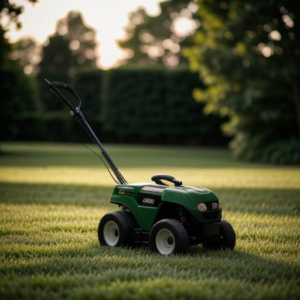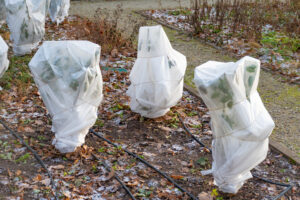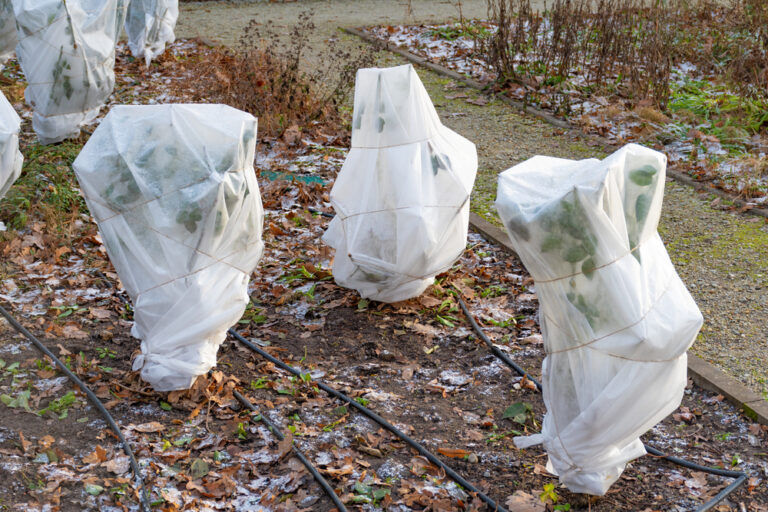Maintaining a luscious, vibrant lawn isn’t just about curb appeal; it’s an investment in your property value, the environment, and your own sense of wellbeing. This comprehensive guide, packed with stats and insights, provides beginners with a detailed roadmap for lawn care, ensuring your grass is not only the envy of the neighborhood but also healthy and thriving.
Understanding Your Lawn: The Groundwork for Success
Grass Types Matter (A Lot): Knowing your grass type isn’t just about aesthetics; it dictates everything from sunlight and water needs to ideal mowing height.
- Kentucky Bluegrass: This cool-season favorite thrives in full sun and moderate temperatures, needing deep watering and a 3-inch mowing height. (Fun fact: Did you know Kentucky Bluegrass actually originated in Europe?)
- Bermuda: This heat-loving wonder craves full sun and thrives in warmer climates, tolerating lower water needs and a shorter 1-inch mowing height. (Stat alert: Bermuda lawns are often chosen for sports fields thanks to their rapid repair and resilience.)
- St. Augustine: This warm-season charmer boasts shade tolerance and a lush, low-growing habit, requiring moderate watering and a 2-inch mowing height. (Bonus tip: St. Augustine’s deep root system makes it naturally resistant to drought!)
The Foundation of It All: Soil Health (and Why It Matters)
Healthy soil is the unsung hero of a thriving lawn. Testing your soil’s pH (aim for 6.0-7.0) and nutrient levels (nitrogen, phosphorus, and potassium are key) ensures your grass has the building blocks it needs to flourish. Remember, soil amendments are like vitamins for your lawn!
Lawn Maintenance: The Keys to Keeping Your Grass Happy
Mowing: An Art, Not Just a Chore: Mowing isn’t just about keeping things tidy; it’s about maintaining the ideal blade length for your grass type. Think tall, not short! Longer blades shade the soil, conserve moisture, and encourage deeper root growth. (Pro tip: A sharp blade is a happy blade; dull blades tear and stress the grass, slowing growth.)
Watering Wisely: Finding the Perfect Balance: Overwatering can drown your lawn, while underwatering stunts growth and invites pests. Aim for 1-1.5 inches of water per week, delivered deeply and infrequently. Early mornings are your friend, minimizing evaporation and preventing fungal growth.
Feeding Your Lawn: The Power of Fertilization: Fertilization replenishes lost nutrients, but choose wisely! Slow-release fertilizers provide consistent nourishment without scorching your grass. Remember, a little goes a long way – overfertilization can harm your lawn and the environment.
Problem-Solving: Keeping Your Lawn Trouble-Free
Weed Warriors: A Proactive Approach: Weeds steal resources from your grass, so prevention is key. Proper mowing, watering, and choosing the right pre-emergent herbicides can give your lawn a fighting chance. (But remember, even the most diligent lawn warrior may need to pull a rogue weed now and then!)
Pests and Diseases: Early Detection is Key: Regularly inspect your lawn for signs of trouble. Catching pest infestations or diseases early allows for targeted, environmentally friendly solutions. Prevention is always better than cure – healthy lawns are naturally more resistant to problems.
Seasonal Care: Tailoring Your Approach for Optimal Results
Spring Awakening: Setting the Stage for Growth: Rake away winter debris, overseed bare patches, and apply pre-emergent herbicide to keep weeds at bay. Spring is the perfect time to give your lawn a fresh start!
Summer Sizzle: Maintaining the Momentum: Focus on proper watering, mowing at the correct height, and keeping an eye out for pests and diseases. Adjust watering schedules based on temperature and rainfall. Remember, even heat-loving grasses need a drink!
Fall Preparation: Building Winter Resilience: Aerate compacted soil, fertilize for slow-release winter nourishment, and consider overseeding for a thicker, greener lawn. A well-prepared lawn is better equipped to handle winter’s challenges.
Winter Wonderland: Protecting Your Green Oasis: Minimize foot traffic on frozen grass to prevent damage, and gently remove heavy snow from branches to avoid breakage. While winter lawn care is minimal, even a little TLC goes a long way!
Advanced Techniques for Lawn Enthusiasts
Aeration: Breathing Room for Your Roots: Aeration involves perforating the soil to allow air, water, and nutrients to reach deeper layers. This promotes healthy root growth and combats soil compaction, a common enemy of thriving lawns.
Overseeding: Boosting Density and Beauty: Overseeding involves spreading grass seed over an existing lawn. This fills in bare spots, thickens the turf, and creates a more uniform appearance. Choose seeds compatible with your existing grass type and follow proper seeding techniques for optimal results.
Beyond the Basics: Eco-Friendly Lawn Care Alternatives:
- Embrace the Natural World: Attract beneficial insects and pollinators by planting flowering borders around your lawn. These natural allies can help control pests and create a vibrant ecosystem in your backyard.
- Compost with Confidence: Turn kitchen scraps and yard waste into nutrient-rich compost, a homemade fertilizer that’s both eco-friendly and budget-friendly.
- Water Wisely with Technology: Consider installing a rain barrel to collect rainwater for irrigation, reducing your reliance on tap water and conserving this precious resource.
- Go Electric: Opt for electric lawn mowers and other equipment to minimize noise pollution and your carbon footprint.
Remember, a healthy lawn is not just about aesthetics; it’s about creating a thriving ecosystem that benefits your property, the environment, and your own well-being. With the right knowledge, patience, and commitment, you can transform your lawn into a lush, green oasis that reflects your dedication and brings you years of enjoyment. So, roll up your sleeves, grab your gardening gloves, and embark on the rewarding journey of lawn care!
Beginner Lawn Care FAQs
Consider your climate, sunlight exposure, and soil conditions. Cool-season grasses like Kentucky Bluegrass thrive in temperate regions with full sun, while warm-season varieties like Bermuda prefer hot climates and tolerate shade better. Consult local nurseries or gardening experts for recommendations.
In Columbia, SC, you’ll be dealing with hot summers and mild winters, with well-draining sandy loam soil typical in the area.
Popular choices include:
- Bermudagrass: This drought-tolerant champion requires full sun and tolerates low water needs, making it a popular choice for busy homeowners.
- Zoysiagrass: This dense and low-growing option thrives in both sun and partial shade, offering excellent weed resistance and a carpet-like appearance.
- Centipedegrass: This shade-tolerant option requires moderate watering and offers a lush, low-maintenance solution for shady areas. specific to your area.
Aim for 1-1.5 inches of water per week, delivered deeply and infrequently. Early mornings are best to minimize evaporation. A good rule of thumb is to water when the top 1-2 inches of soil feel dry to the touch.
Generally, taller is better! Longer blades shade the soil, conserve moisture, and encourage deeper root growth. Check recommended mowing heights for your specific grass type. A sharp blade ensures clean cuts and healthy grass.
Start with prevention! Proper mowing, watering, and choosing the right pre-emergent herbicides can make a big difference. For existing weeds, identify them before applying weed control solutions. Organic options like pulling weeds manually or using vinegar are available for environmentally conscious gardeners.
Brown patches can have various causes, from improper watering or mowing to disease or pests. Observe the size, shape, and texture of the patches for clues. Research online or consult a lawn care professional for help in diagnosing and addressing the issue.
Choose low-maintenance grass varieties and implement practices like mulching to suppress weeds and retain moisture. Invest in tools like timers for sprinklers and robotic lawnmowers to automate tasks. Remember, small but consistent efforts add up over time.
Absolutely! DIY lawn care is a great way to save. Opt for homemade compost instead of store-bought fertilizers, collect rainwater for irrigation, and borrow or share equipment with neighbors. Research eco-friendly alternatives that are often cheaper and better for the environment.
Consider aeration to combat soil compaction and promote deep root growth. Overseeding helps fill in bare spots and thicken the turf for a more uniform look. Research specific techniques and products suitable for your grass type and local conditions.






